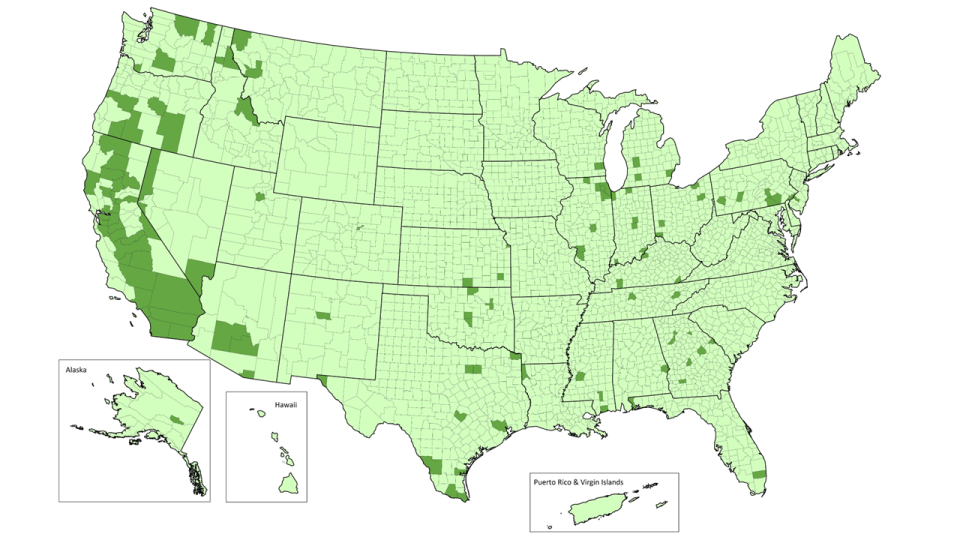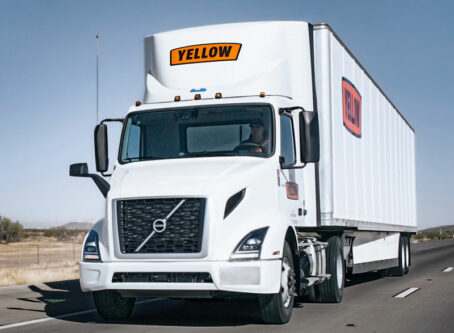New air quality standards could have downstream effects on trucking industry
The Environmental Protection Agency has set stronger air quality standards, which have the potential to impact the trucking industry.
On Wednesday, Feb. 7, the EPA announced “a significantly stronger air quality standard” regulating fine particle pollution, commonly known as soot. The new standard lowers the level of fine particulate matter from 12 micrograms per cubic meter to 9 micrograms.
Particle pollution has been regulated since 1971. Back then, the standard was 75 micrograms per cubic meter for total suspended particles. Since then, the standard has been revised four times: to 50 micrograms in 1987 (particulate matter, not fine particulate matter), 15 micrograms in 1997 (first year regulating soot pollution) and 12 micrograms in 2012.
The Clean Air Act requires the EPA to review the National Ambient Air Quality Standards every five years to determine whether they should be retained or revised. The last review was in 2020, when the Trump administration announced it would retain the 2012 levels. However, when the Biden administration took over, the EPA announced it would reconsider that decision.
Defending the decision, the current EPA said the “best available science” directs it to revise the 2012 air quality standards related to fine particulate matter. According to the agency, the new standard will prevent up to 4,500 premature deaths and 290,000 lost workdays, resulting up to $46 billion in net health benefits by 2032.
The new air quality standards do not require any specific pollution criteria for certain industries. Rather, the standards require states to meet fine particulate matter levels for the overall air quality.
States must comply with the new standards by 2032. Areas that do not currently comply with the lower standards can meet the new requirements however they see fit.
The EPA projects that 99% of the country will meet the new air quality standards by 2032. Currently, most counties meet the lower standard. However, large swaths of the West, including most of California, do not comply, nor do certain pockets in the Rust Belt and the South.

While the EPA claims the new air quality standards “will make Americans healthier and more productive, while underpinning a manufacturing resurgence in America,” the manufacturing industry is more skeptical. Additionally, the EPA indicated that efforts to reduce pollution from vehicles will help meet the new standards.
Effects on manufacturing
Scores of industry groups have warned the EPA that revising air quality standards could have unintended consequences, which could impact the trucking industry.
Last November, the American Forest & Paper Association, the National Association of Manufacturers and more than 70 other manufacturing and trade groups issued a letter to the White House urging the administration to retain 2012 air quality standards. The coalition argued that the new standard could put nearly 40% of the U.S. population in areas out of compliance and “would risk jobs and livelihoods by making it even more difficult to obtain permits for new factories, facilities and infrastructure to power economic growth.”
“The Biden administration’s new (fine particulate matter) standard takes direct aim at manufacturing investment and job creation in direct contradiction to the president’s stated goal of strengthening manufacturing in communities all across America,” National Association of Manufacturers CEO Jay Timmons said in a statement.
A reduction in manufacturing in the U.S. could mean a reduction in trucking freight. According to the Owner-Operator Independent Drivers Association’s Foundation, manufacturing generates about 60% of all for-hire freight. And it has been going through a recession. Perhaps not coincidentally, the trucking industry also has been suffering a recession.
The National Association of Manufacturers said in a news release that it “will continue to call on Congress to reverse” the revised air quality standards.
It is entirely possible that an attempt by Congress to undo the new standards could happen. Republican members in both the House and Senate currently are challenging a new rule related to pollution, emissions and air quality.
On Wednesday, Feb. 7, Sens. Shelley Moore Capito, R-W.Va., ranking member of the Environment and Public Works Committee, and Kevin Cramer, R-N.D., ranking member of EPW’s Transportation and Infrastructure Subcommittee, introduced a joint resolution of disapproval to overturn the Federal Highway Administration’s greenhouse gas performance measures. A companion version of the resolution has been introduced in the House by Reps. Sam Graves, R-Mo., and Rick Crawford, R-Ark.
In fact, Sen. Capito already has spoken out against the new air quality standards.
“To comply with this rule, states will need to limit development across large areas of the country, threatening manufacturing and energy projects, limiting economic growth and leaving millions of Americans behind to deal with the negative consequences,” Capito said in a statement. “Given the vast majority of (fine particulate matter) emissions come from non-point sources like wildfires, we urged the administration not to go too far or target American businesses by setting its particulate matter standard too low. It’s disappointing to see the EPA is moving ahead without considering these important factors.”
Truck emission standards
With lower air quality standards to meet, states may be incentivized to establish stricter emission standards on vehicles, including trucks.
In a press release, the EPA said it will help states reach the new standard over the coming years “through complementary EPA standards to reduce pollution from power plants, vehicles and industrial facilities.”
One of those complementary standards at the federal level is the pending finalized rule establishing stricter truck emission standards. However, states now have the ability to set truck emission standards that go beyond current federal standards.
In March 2023, the EPA granted a waiver allowing California to move forward with its Advanced Clean Trucks regulation. Manufacturers who certify Class 2b-8 chassis or complete vehicles with combustion engines would be required to sell zero-emission trucks as an increasing percentage of their annual California sales from 2024 to 2035. By 2035, zero-emission truck/chassis sales would need to be 55% of Class 2b-3 truck sales, 75% of Class 4-8 straight truck sales and 40% of truck tractor sales.
States are not allowed to set emission standards that are higher than the federal standard.
However, the Clean Air Act carves out an exception for California as long as the EPA approves of any changes. Once California gets that approval, other states are permitted to adopt those standards.
According to the U.S. Department of Energy, nine other states have adopted the Advanced Clean Trucks standard: Colorado, Maryland, Massachusetts, New Jersey, New Mexico, New York, Oregon, Vermont and Washington.
The National Association of Manufacturers has claimed the new air quality standards will hit California’s manufacturing sector hardest, followed by Michigan and Illinois. In order to limit the impact on manufacturing, states like Michigan and Illinois can look elsewhere to reduce overall emissions, including by adopting more stringent vehicle emission standards.
It’s worth noting that eliminating tailpipe emissions does not necessarily have a net-zero effect on overall emissions. As the Department of Energy points out, “there are additional emissions associated with the extraction, processing and distribution of the primary energy sources they use for electricity production.”
What’s ahead?
Now that new air quality standards have been finalized, states will need to determine how to meet them, assuming they stay intact.
As noted above, similar environmental regulations are being challenged both by Congress and in the federal courtroom. The Federal Highway Administration’s greenhouse gas performance measures are being challenged by 21 states. A similar lawsuit may challenge the EPA’s air quality standard revision.
Heading into a presidential election, a lot can change if administrations change. Although the EPA retained standards in 2020, that was reversed under a new administration. Another regime change could mean another about-face.
In the meantime, states have until 2032 to meet new air quality standards. That’s eight years away, and a lot could happen regarding technology, federal regulations and a host of other factors, allowing states to stay compliant without disrupting industries. LL









